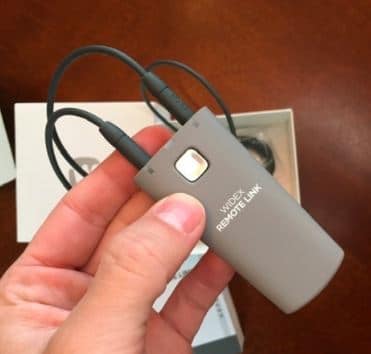There are no barriers that discourage new entrants to the hearing aid industry (previous post at HHTM).
Part 1 of the barrier series itemized regulatory requirements that discourage new entrants; Part 2 distinguished between legal and economic definitions of barrier to industry entry/exit and briefly described some structural and strategic barriers in the hearing aid industry.
Today’s post describes more strategic barriers used by incumbent manufacturers in their competitive response against entry firms.
Product Differentiation
Incumbent manufacturers call on all their market power resources to build brand barriers which intimidate or discourage entry by potential competitors. Those resources are valuable, worth protecting, and often deserving of respect. They include:
- Seniority in the industry
- patent-protected technological innovations
- large-budget, long-term advertising and promotional campaigns that build and reinforce “entrenched buyer preferences for established brands or company reputations“1
- distribution channels, often locked in with contractual buying arrangement that are difficult for newcomers to penetrate
That last item, addressed in detail in the next section, is of particular importance to licensed professionals because it is the juncture where audiologists and dispensers get mortared into a higher barrier which further limits newcomer access.
Access to Downstream Suppliers and Distribution Channels
Incumbents benefit from a “network effect” in which many (most) dispensers and their patients use the products of existing firms. The network effect works by snowballing: the more users, the greater benefits to dispensers (e.g., reduced cost of goods) and clients (e.g., increased features, more dispensers). The greater the benefits, the higher the retention and word of mouth attraction of new users. New entries with few users cannot leverage a network effect.
Incumbents can gain market power and deter new entries by tying up supply chains. In the hearing aid industry, this has been done most notably in recent years by manufacturer forward integration and contractual arrangements with retail chains, buying groups and independents, leveraging the fact that hearing aid products are “must-haves” for dispensers and dispensing audiologists.
Here are a few examples of such arrangements and the strategic manner in which they can discourage new entries:
- Loyalty schemes. Manufactures lock licensed dispensers into buying plan agreements in which cost of goods is discounted, directly or indirectly, in return for guaranteed purchase of specific products in specified time period. Practices sometimes find it difficult to exit such agreements, sometimes they find it impossible due to buying commitments and reduced cash flow .
- Tailored marketing. A variation of contractual loyalty in which manufacturers provide consumer list access and other media outreach to practices in return for guaranteed or up-front product purchase.
- Switching costs. Manufacturers tie proprietary software and hardware (e.g., cords, wireless connections) to incremental technological innovation, all or most of which is offered to practices at no cost. In return, practices allocate time and resources to acquisition, installation, training, and development of expertise with the proprietary offerings. The effort required often means that practices and dispensers forego the opportunity cost of acquiring infrastructure and expertise in other firms’ products. As a result, independent providers and chains inadvertently specialize to a few incumbents and lack the resources or interest to explore new entry products.
Though serving as disincentives for new entrants, these strategies do not limit competitive behavior among incumbents. The strategies give independent practices little or no incentive to break off loyalty agreements and face switching costs, which means that incumbent competitors must either purchase practices (forward integration) or compete ever more aggressively to acquire them as customers in order to gain access and downstream control of distribution.
Manufacturers continue to offer more enticing purchase pricing arrangements to successful practices to get them to switch loyalty. Lower average sale price at both wholesale and retail levels can manifest in the long run as a result of such ongoing competition within the barrier walls. Lower pricing within the barriers means less economic deadweight loss, which means more consumers benefit.
Good Walls Can Make Good Neighbors
Barriers aren’t always bad, as suggested by previous paragraph and in part 2 of this series. Scalable barriers can be constructive for markets.
- Silver Bullets: High entry barriers create safe havens within which incumbents can compete aggressively through innovative efforts which they can price equally aggressively to recoup development costs.2 Innovation and serious R&D may be arrested if the barrier is dismantled, as was the case of Bells Labs after the breakup of AT&T.
- New Product Spaces: Differentiation by technology and branding can indelibly stamp products in the market, which is good for incumbents. By the same token, the inherent boundaries of differentiated products can facilitate entry of new competitors that may “identify areas … that are not well served by incumbents, and enter with differentiated products that meet the demands of those customers. “3
Moving On
The finale in this series will link barriers for traditional hearing aids and dispensing to current social policy discussion brought about by technological innovations in devices and delivery systems. Natural and irrelevant barriers are part of the concluding discussion.
References & Footnotes
1See decision in Los Angeles Land Co. v. Brunswick for a judgement which considers branding a main source of entry barrier.
2Weitz BA & Wensley R (Eds). Handbook of Marketing. London: Sage Pub’lns (2006).
3Culbertson JD & Weinstein R. Antitrust Aspects of Barriers to Entry. Paper presented at the UCLA Law First Annual Institute on US and EU Antitrust Aspects of Mergers and Acquisitions. Feb 27-28, 2004.
This is Part 3 of a 5-part series on barriers. Click for Part 1, Part 2, Part 4, or Part 5.
Feature image from The Treasure of the Sierra Madre






